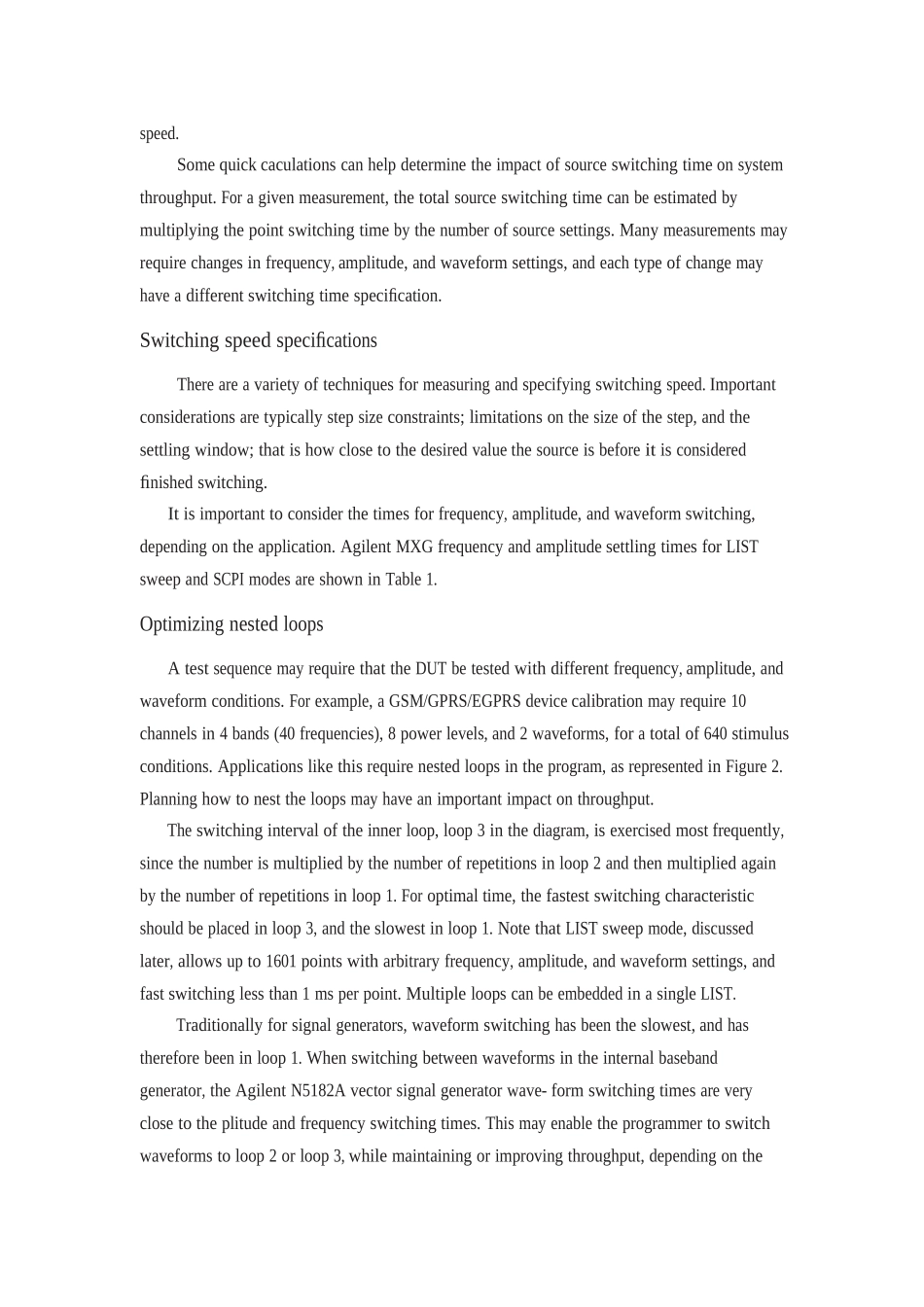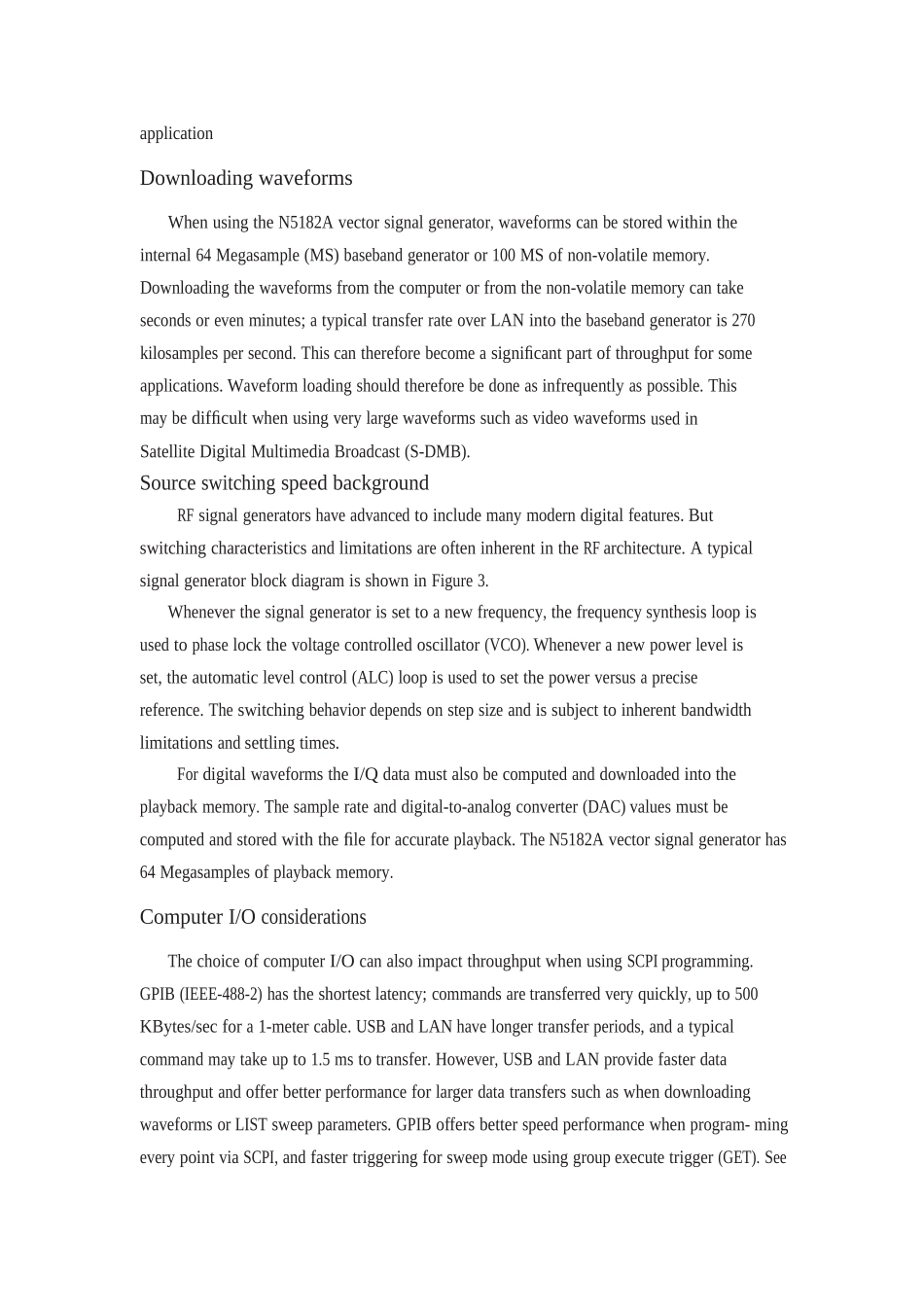Agilent Improving Throughputwith Fast RF Signal Generator SwitchingIntroductionToday’s manufacturers of wireless components, devices, and systems face significant pressure to increase throughput and lower the cost of test. Improving the speed of automated test equipment (ATE) can be an important factor in reducing overall test times. This note describes techniques for optimizing RFsignal generators within ATEs to reduce test times and improve throughput. Although these concepts can be applied to any signal generator, the examples shown in this note apply to the Agilent N5181A MXG analog and N5182A MXG vector signal generators (250 kHz to 6 GHz). When equipped with the fast switching capability (Option UNZ), these signal generators can switch frequency, amplitude, or waveform in less than 1 millisecond in most cases.Motivation for faster testsMore and more functionality is integrated into wireless systems, requiring more tests with more setups under more conditions. Connectivity methods are expanding to include not just voice and data throughGSM and CDMA, but a variety of data connections such as RFID, Bluetooth®,WiMAX, and UWB. New broadcast functions are also being supported, such as FM radio, Mobile TV, and Assisted GPS. These modes require testing and verification, over multiple channels, and different power levels, and with realistic waveforms. This can make the efforts to reduce test time and test cost even more challenging.Understanding the Role of the Signal GeneratorTo optimize a signal generator, it is important to understand its role in the ATE system and how it is programmed in relation to other elements in the system.Throughput versus switching speedIt represents a typical ATE system and the st...


